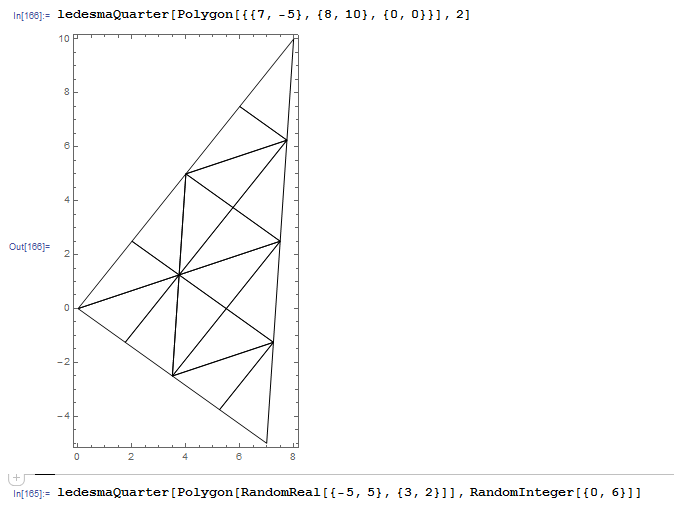This example goes wrong. Thank you for pointing that out. That happened because SortBy ignores the numerical value
In[27]:= qS = SortBy[Partition[{{4, 5}, {0, 0}, {15/2, 5/2}}, 2, 1, 1], Norm[Subtract @@ #] &]
Out[27]= {{{0, 0}, {15/2, 5/2}}, {{15/2, 5/2}, {4, 5}}, {{4, 5}, {0, 0}}}
In[28]:= qS = EuclideanDistance @@@ SortBy[Partition[{{4, 5}, {0, 0}, {15/2, 5/2}}, 2, 1, 1], Norm[Subtract @@ #] &]
Out[28]= {5 Sqrt[5/2], Sqrt[37/2], Sqrt[41]}
In[29]:= N[qS]
Out[29]= {7.90569, 4.30116, 6.40312}
In[30]:= LeafCount /@ qS
Out[30]= {9, 7, 5}
Sort on the set {5 Sqrt[5/2], Sqrt[37/2], Sqrt[41]} respects neither the numerical value nor the LeafCount.
In[31]:= Sort[{5 Sqrt[5/2], Sqrt[37/2], Sqrt[41]}]
Out[31]= {5 Sqrt[5/2], Sqrt[37/2], Sqrt[41]}
In[32]:= OrderedQ[Sort[{5 Sqrt[5/2], Sqrt[37/2], Sqrt[41]}]]
Out[32]= True
In[33]:= OrderedQ [LeafCount /@ {5 Sqrt[5/2], Sqrt[37/2], Sqrt[41]}]
Out[33]= False
this is a bit over-canonical but it is as it is. Well. Let's change the norm again to fix that
Clear[ledesmaQuarter, triangleQ, q, q4, orie]
orie[p1_List, p2_List, p3_List] := If[Det[{p1 - p3, p2 - p3}] > 0, {p1, p2}, {p2, p1}]
q4[l_List] :=
Block[{qS = Sort[Partition[l, 2, 1, 1], (EuclideanDistance @@ #1) < (EuclideanDistance @@ #2) &],
p01, p02, p03, p11, p12, p13},
(* triangle has points p01,p02,p03 *)
(* orient the triangle *)
(* the biggest angle (vertex p01) is opposite to the longest edge,
find it's midpoint: p11 *)
(* get the midpoint of the legs of the biggest angle: p12, p13 *)
{p02, p03} = qS[[-1]]; p01 = Complement[l, qS[[-1]]][[1]];
{p02, p03} = orie[p02, p03, p01];
{p13, p12, p11} = (Plus[#[[1]], #[[2]]]/2)& /@ qS;
{p12, p13} = orie[p12, p13, p11];
{{p01, p13, p11}, {p13, p02, p11}, {p11, p03, p12}, {p12, p01, p11}}
]
q[l_List] := Flatten[q4 /@ l, 1]
triangleQ[l_List] := If[Length[l] != 3, False,
If[Chop[Area[Triangle[l]]] == 0, False,
True]
]
ledesmaQuarter[l_Polygon (* a triangle *),
n_Integer?NonNegative(* number of sections *)] :=
Module[{l0 = Sequence @@ l},
If[! triangleQ[l0],
Print["Polygon ", l, " is not a triangle."];
Return[$Failed]
];
Graphics[Line[Join[#, {First[#]}]& /@ Nest[q, {l0}, n]], Frame -> True]
]
and look again at the test triangle

With respect to the interesting triangulation video made by your friend, have you seen Vitaliy's post Your own personal digital Rosetta Comet, especially the MeshRegion? I presume it's possible to redo your friend's program in Mathematica, but I'm not going to proof that.